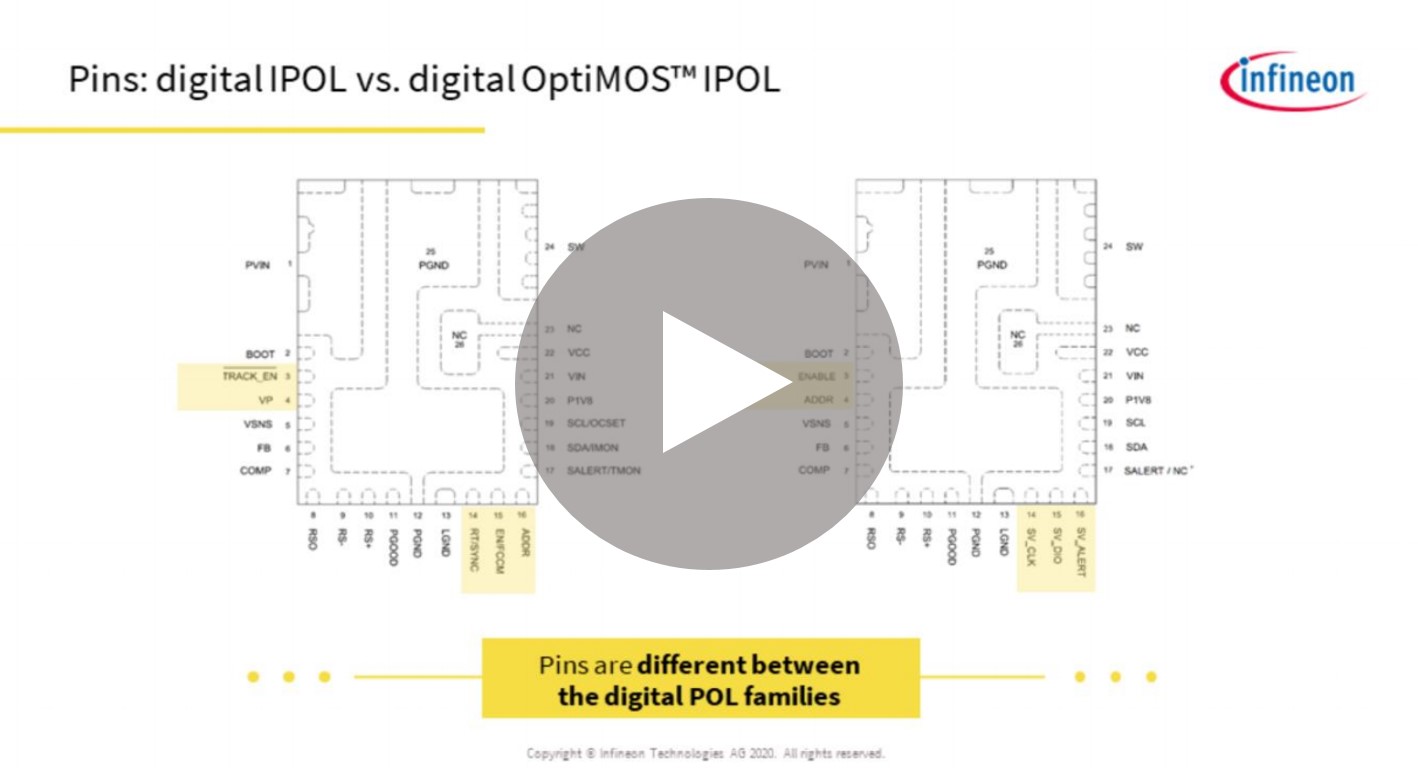Integrated POL Voltage Regulators
Highest density and high efficiency integrated point-of-load (IPOL) voltage regulator solutions for smart enterprise systems
Infineon’s integrated POL voltage regulators up to 40 A deliver benchmark efficiency and dramatically reduce the system size. Target applications for integrated point-of-load regulator include servers, storage, routers and switches, telecom base stations, and embedded computing. Solutions with and without digital interfaces are available in single-output and multi-rail formats.
Ready-to-go reference designs and the online simulator simplify the task of designing regulated voltage rails. Different control topologies are available to meet an application’s specific requirements. Use the table below to select the most appropriate topology.

| Choose this: | Analog constant on-time | Analog power module | Voltage mode with PMBus and SVID | Constant on – time with PMBus and SVID |
| If you want... | Light load efficiency or simplicity | Easy-to-design, compact layout | Digital telemetry | Digital telemetry |
| Benefits |
|
|
|
|
| Choose this: | Analog constant on-time | Analog power module | Voltage mode with PMBus and SVID | Constant on – time with PMBus and SVID |
IPOL power module is a fully integrated buck converter with an integrated inductor and other passive components. It's easy to design while offering a high-efficiency load and line regulation over a wide input supply range. With integrated inductor and capacitors, it reduces external components and saves 80% of PCB area. Therefore, IPOL power module allows a much higher power density while minimizing the parasitic parameters.
Infineon's POL regulators offer a choice of analog (easy to configure) or digital (flexible programming) interfaces. An I2C or PMBus digital interface allows a deep level of customization and access to telemetry information. Configuration of the digital interface POLs is easily programmed with Infineon's PowIRCenter software GUI.
Infineon's POLs are offered in a variety of control topologies. Constant on-time (CoT) is recommended when ease of use is important and switching noise spectrum is not. Current mode (CM) is recommended when switching noise spectrum is important. In either topology, the switching frequency can be programmed to meet application requirements.






